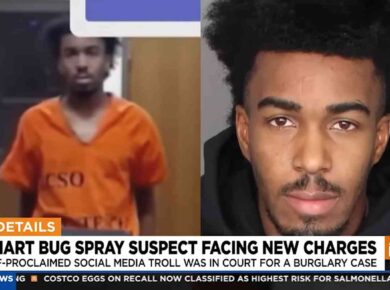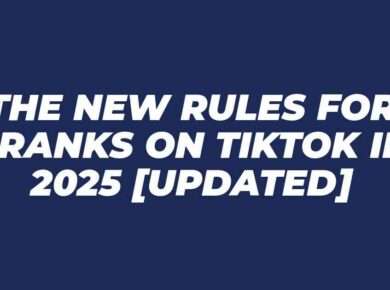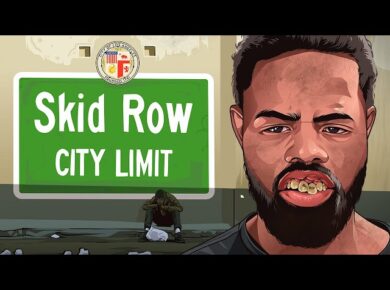Social media in 2025 reveals a clear divide between Gen Z and Millennials, driven by their distinct ages and digital behaviors. Gen Z prioritizes entertainment and authenticity, often relying on influencers and quick, engaging content. Millennials, on the other hand, lean towards platforms like Facebook and LinkedIn, focusing on connection, brand loyalty, and professional growth. These differences challenge marketers to craft tailored strategies that resonate with each group, ensuring relevance and meaningful engagement. Learn more about what it takes to succeed as a social media influencer in 2025 by exploring our in-depth guide.
Key Social Media Platforms for Gen Z and Millennials
Social media usage in 2025 demonstrates how generational preferences shape platform dominance. While Gen Z and Millennials both integrate social media into their daily lives, their choices reflect distinct priorities and behaviors. Understanding these differences is vital for marketers and digital creators seeking to connect authentically with these groups.
Gen Z’s Top Social Media Choices
Gen Z continues to dominate platforms like TikTok, Instagram, and Snapchat. These platforms appeal to their desire for short, engaging content and interactive features. Born into a world of smartphones and instant connectivity, Gen Z, primarily aged between 10 and 25 in 2025, is redefining digital engagement through their distinct habits.
- TikTok: This remains Gen Z’s favorite due to its algorithm-driven feed that delivers hyper-relevant content. Teens and young adults often spend hours consuming and creating videos featuring humor, challenges, and cultural trends.
- Instagram: Known for its visual appeal, Instagram still holds sway with photo sharing, Stories, and Reels. Gen Z gravitates towards the app’s sleek interfaces and influencer-driven culture.
- Snapchat: With disappearing messages and private stories, Snapchat satisfies Gen Z’s preference for authentic and ephemeral communication.
For Gen Z, social media is a space to showcase creativity, connect with niche communities, and amplify authentic voices. They value realness and are quick to challenge traditional advertising methods, often favoring influencers who align with their values. For more insights into generational trends, explore this blog post.
Millennials’ Go-To Platforms
Millennials, defined as individuals aged between 26 and 40 in 2025, maintain a strong presence on platforms like Facebook, LinkedIn, and YouTube. Their choices reflect a balance of personal connection, professional ambitions, and a thirst for substantial content.
- Facebook: Despite a decline in its younger audience, Facebook remains a staple for Millennials. They use it for personal updates, group interactions, and maintaining long-distance connections.
- LinkedIn: Millennials are the dominant force on LinkedIn, leveraging the platform for networking, career development, and staying informed about industry updates. They appreciate its professionalism and opportunities for career growth.
- YouTube: As a hub for tutorials, reviews, and long-form content, YouTube appeals to Millennials seeking to learn, entertain, or explore new interests.
Millennials often straddle dual living spaces—personal and professional. This generational cohort appreciates platforms that support their multifaceted lives, offering both meaningful connections and career advancement. Dive deeper into how Millennials shape social media behaviors in the InfluencersWiki Blog.
In understanding these preferences, it’s evident that both Gen Z and Millennials use social media not just as a tool, but as an extension of their identities and aspirations.
Content Preferences and Engagement Styles
The differences between how Gen Z and Millennials engage with social media content in 2025 are substantial. Driven by their unique life experiences and preferences, each generation gravitates towards specific formats and styles that align with their values and habits. Understanding these distinctions is essential for brands and influencers aiming to connect meaningfully with their audiences.
Short-Form Video and Interactive Content
Gen Z, often referred to as digital natives, thrives in environments that offer fast-paced, visually captivating, and participatory content. Platforms like TikTok and Snapchat are their go-to choices due to their ability to deliver exactly this. Gen Z prefers short-form videos that are often under a minute, combining humor, relatability, and visual storytelling. These formats cater to their limited attention spans and desire for immediate gratification.
Interactive content plays a vital role in engaging Gen Z. Features like polls, quizzes, AR filters, and interactive challenges are highly effective in sustaining their interest. TikTok trends, such as dance challenges or “duet” videos, exemplify this appeal, as they blend creativity with direct audience participation. This level of engagement is crucial for brands trying to build connections with a generation that values authenticity and fun-driven content.
Some influencers, such as WinterKloudz, have mastered the art of short, engaging videos that resonate with Gen Z’s expectations. They monitor feedback closely to ensure their content aligns with followers’ ever-evolving preferences, making them relatable and timely.
Informative and Long-Form Content
Millennials, in contrast, tend to favor educational and long-form content that offers substance and depth. Known for their higher levels of career and family responsibilities, Millennials often seek content that adds value to their personal or professional lives. Whether it’s blog posts, YouTube tutorials, or webinars, they prefer platforms that provide actionable insights and detailed information.
Facebook and LinkedIn are Millennials’ preferred spaces for this type of content. They rely on these platforms to network, research opinions, and stay up to date with career-related trends. For example, webinars on industry topics, in-depth guides, and podcasts are highly appealing to Millennials who often multitask while consuming information.
Creators who cater to this demographic understand the importance of credibility and thought leadership. For instance, influencers like ShoPhoCho balance entertainment with mentorship, ensuring their audience gains valuable knowledge alongside engaging storytelling.
By addressing these generational nuances in content preferences, brands can craft strategies that resonate authentically with their target audiences. Whether it’s Gen Z’s love for interactive fun or Millennials’ appreciation for depth, understanding these habits is crucial to fostering meaningful engagement.
Influence of Social Commerce in 2025
The rise of social commerce in 2025 has redefined how Gen Z and Millennials approach online shopping. These two generations play a pivotal role in shaping this growing trend, with their distinct behaviors and preferences creating unique shopping experiences on social platforms. Understanding these differences provides valuable insights into the future of consumer behavior.
Gen Z’s Approach to Social Shopping
Gen Z, born into the digital era, has embraced social commerce as an extension of their online lives. They prefer seamless shopping experiences that occur directly on platforms like TikTok and Instagram without ever needing to leave the app. Convenience rules here; every click, swipe, or link must lead to an effortless checkout.
This generation is also highly deal-oriented. Flash sales, discount codes shared by influencers, and platform-exclusive promotions capture their attention. It’s not just about getting a good price—Gen Z wants the thrill of snagging a deal in real-time.
Influencers remain central to their purchasing decisions. Gen Z trusts influencers who resonate with their values, particularly those showcasing authenticity. Influencers like Andrey Grechka, known for blending trendy aesthetics with relatable content, are ideal examples of what captivates this audience. Their endorsements often act as the final push to complete a purchase.
Additionally, Gen Z thrives on innovation in shopping features. Tools like AR try-ons or direct product links embedded in social posts align perfectly with their tech-savvy nature, making purchasing decisions quick and interactive. For deeper insights into how smaller creators influence similar trends, check out The Rise of Nano-Influencers.
Millennials as Social Commerce Leaders
Millennials, now in their late 20s to mid-40s, are driving social commerce forward, but their approach is distinctively different from Gen Z. They utilize platforms like Facebook Marketplace, where convenience and detailed content intersect. For Millennials, social media isn’t just a place to discover products—it’s where they thoroughly vet purchases.
Their preference for detailed reviews and user-generated content plays a huge role in their buying process. Before committing to a purchase, Millennials actively seek feedback from peers or follow threads where products are discussed extensively. This behavior stems from their need for transparency and a desire to make informed decisions.
Convenience is critical for Millennials. They want integrations that allow frictionless payments, fast delivery options, and clear return policies. Platforms that integrate shopping with their everyday routines, whether through push notifications for sales or personalized product recommendations, are winning their loyalty.
Unlike Gen Z, Millennials place less reliance on influencer endorsements. Instead, they value practical product demonstrations and reviews from peers or micro-influencers. For example, the impact of targeted campaigns is evident in Case Studies: How Brands Thrived with Nano and Micro Influencers in 2025, where real-life applications often hold more weight than aspirational messaging.
By appreciating the distinct approaches of both generations, brands can better cater to their needs. While Gen Z seeks immediacy and creativity, Millennials prioritize reliability and depth in their online shopping experiences. These differences underline the importance of tailored social commerce strategies for sustained success in 2025.
Usage Patterns and Time Spent
In 2025, social media usage patterns clearly distinguish Gen Z and Millennials. Each generation exhibits unique behaviors shaped by their priorities, needs, and technological fluency. From Gen Z’s tightly focused interactions to Millennials’ broad and multifaceted engagement, understanding these patterns reveals the nuanced ways each group integrates social platforms into their lives.
Gen Z’s Focused Platform Interactions
Gen Z, born into a world dominated by instant connectivity, approaches social media with precision. They prioritize a select few platforms, choosing to immerse themselves deeply rather than spreading their time thin. TikTok, Instagram, and Snapchat dominate their digital lives, offering the interactive and visually stimulating environments they crave.
This generation’s interactions are highly targeted and time-bound. On average, Gen Z spends fewer hours on social media compared to Millennials but maximizes these hours through focused engagement. Rather than passively scrolling through varied content, they:
- Seek short bursts of entertainment via short-form videos and challenges.
- Follow influencers who align with their values, prioritizing authenticity and relatability.
- Join niche communities to connect with like-minded peers over shared interests.
For Gen Z, their online time is highly intentional. Social media isn’t just a leisure activity—it’s a key component of self-expression and cultural participation. Popular creators like Auronplay continue to captivate this demographic by tailoring content that resonates with their interests and values.
Millennials’ Broader Platform Consumption
Unlike Gen Z, Millennials integrate social media into almost every aspect of their daily lives. Whether it’s maintaining friendships, staying informed, or advancing their careers, their usage is far-reaching. Platforms such as Facebook, LinkedIn, and YouTube remain essential tools for balancing personal and professional needs.
Millennials spend a significant portion of their screen time engaging in various activities across multiple platforms. Some common patterns include:
- Facebook: Used to maintain personal connections, engage in local groups, and share life events.
- LinkedIn: Essential for networking, career-building, and professional development.
- YouTube: A source of education and entertainment, offering everything from tutorials to long-form content.
This group appreciates platforms that seamlessly support multitasking. Whether they’re watching a YouTube recipe video while cooking or networking on LinkedIn during their commute, Millennials make the most of their online time. Their broad usage reflects their dual focus on personal growth and professional advancement, ensuring each platform contributes to their goals.
Understanding these generational tendencies provides invaluable insights for marketers and influencers aiming to connect authentically. By recognizing how each group spends time online, brands can better tailor their strategies to align with their audiences’ behaviors.
Marketing and Branding Tips for 2025
In 2025, marketing and branding require a distinct approach for connecting with Gen Z and Millennials. While Gen Z seeks authenticity and interaction, Millennials value trust and transparency. Understanding the nuances between these generations will help businesses create campaigns that resonate and foster loyalty.
Building Authentic Connections with Gen Z
Gen Z craves authenticity in every interaction. To capture their attention, businesses must focus on relatable and interactive campaigns that speak directly to their values and interests. Here are some proven tips:
- Incorporate User-Generated Content (UGC): Gen Z trusts content created by peers over polished brand advertisements. Encouraging followers to share their experiences with your brand helps create a sense of community and genuine engagement.
- Use Interactive Social Media Features: Polls, quizzes, and AR filters are effective tools. These features invite participation, keeping audiences engaged while providing valuable feedback.
- Highlight Inclusivity and Social Issues: Campaigns that reflect diversity and address social causes resonate deeply with Gen Z. Aligning your brand with values they hold dear strengthens emotional connections.
Engaging Gen Z also means collaborating with relatable influencers. Creators who are transparent about their real name, age, and personal experiences feel more authentic to this audience. For insights into working with influencers, explore A Beginner’s Guide to Measuring ROI in Influencer Campaigns.
Cultivating Trust with Millennials
Millennials, on the other hand, prioritize transparency and consistency. Building their trust requires a clear and dependable communication style. Consider these strategies:
- Be Transparent About Brand Values: Millennials value honesty. Sharing your brand’s story, mission, and impact with clarity fosters credibility.
- Focus on Consistent Engagement: Regularly updating your audience with meaningful content—whether through newsletters, blogs, or live Q&A sessions—maintains their interest over time.
- Leverage Thought Leadership: Millennials respect expertise. Collaborating with professionals like industry leaders or micro-influencers can position your brand as a source of reliable information.
Millennials also rely heavily on detailed reviews and recommendations before making decisions. Platforms that provide verified user feedback or detailed product demonstrations align well with their preferences. To learn more about effective branding strategies, check out How to Become a Social Media Influencer in 2025.
By understanding these generational distinctions, businesses can shape campaigns that not only capture attention but also build lasting relationships with their target audiences.
Conclusion
Understanding how Gen Z and Millennials use social platforms differently in 2025 unlocks powerful opportunities for marketers. Gen Z gravitates towards authenticity and fast-paced interactions, favoring tools that amplify creativity and values-driven connections. Millennials, however, prioritize depth, networking, and credibility, using social media as a bridge between personal and professional goals.
By aligning strategies with these distinct preferences, brands can foster meaningful relationships and sustained engagement. Tailoring content formats, platform focus, and interaction styles to each generation’s needs is no longer optional—it’s essential.
For further reading on social media influencer trends, explore the profiles of key creators like Anaya Kandhal or dive into comprehensive insights on Zack Films. These examples highlight how creators connect with generational audiences while shaping the future of digital engagement.






